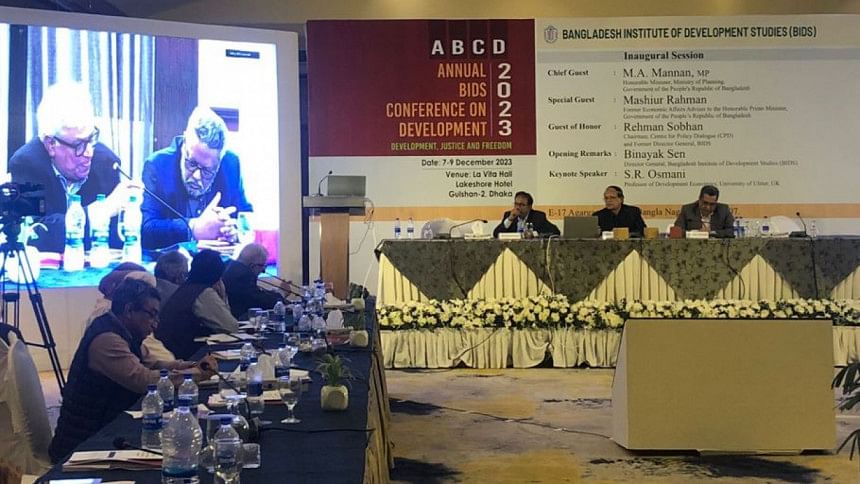Employment jumps 16-fold in areas surrounding EPZs

Employment in areas neighbouring eight export processing zones (EPZs) across Bangladesh jumped by almost 16-fold since industrial enclaves were established, according to a study by the Bangladesh Institute of Development Studies (BIDS).
As per a census conducted by BIDS in 2015, around 2,413 people living within a one-kilometre radius of the EPZs have become involved in the economic activities of backward linkage and ancillary industries in adjacent areas.
Meanwhile, the number of enterprises established centring the EPZs has surged by at least 10-fold to 889, according to Mohammad Yunus, research director of BIDS.
"The growth of linked and ancillary enterprises of the EPZs in terms of number, employment and turnover is remarkable," he said.
He made these remarks while presenting a paper, styled "Export Processing Zones in Bangladesh. Enclave Industrialization Redux?", at an annual BIDS conference in Dhaka yesterday.
BIDS had conducted the census to compare the number of employment opportunities in areas surrounding EPZs before and after their establishment.
The study also found that the average turnover of businesses within surveyed areas has increased by around 58 percent to Tk 21 lakh.
Neighbouring areas of the Chittagong Export Processing Zone saw the most robust growth, accounting for nearly half of the total employment generated around the EPZs.
During his presentation, Yunus also shared the cost-benefit analysis of the EPZs, which shows that only the Mongla EPZ is lagging behind in terms of economic viability.
"Overall, the cost-benefit results are positive and investment in establishing the EPZs has been worthwhile," he said, adding that there is still a need to upskill workers to increase productivity.
Yunus also questioned whether the Bangladesh Small and Cottage Industries Corporation (BSCIC), Bangladesh Export Processing Zones Authority and Bangladesh Economic Zones Authority should act as separate agencies or come under one umbrella.
Mashiur Rahman, former economic affairs adviser to the prime minister, said the BSCIC works for small entrepreneurs while the EPZs are meant for large-scale units, especially export-oriented ones.
"Although many plots remain vacant at BSCIC industrial estates, there are no empty areas in the EPZs," he added.
Regarding the reasons for employment growth in areas surrounding the EPZs, he said it is possible that their locations provide a conducive climate for investors.
The session was chaired by Atiur Rahman, former governor of Bangladesh Bank.

 For all latest news, follow The Daily Star's Google News channel.
For all latest news, follow The Daily Star's Google News channel. 



Comments